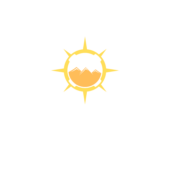Embarking on a hiking adventure can be an exhilarating experience, but it’s not something you should leap into unprepared. Training is essential to ensure you’re physically ready to tackle those challenging terrains and steep inclines. This article will provide valuable insights on how to train for hiking, ensuring you’re well-equipped to conquer any trail.
How To Train For Hiking
 Underneath the broad umbrella of hiking training, lie three critical components that serve as its pillars – cardiovascular fitness, strength training, and flexibility. Think about cardiovascular fitness like the engine of a car. Hikers with a stellar cardiovascular capacity, akin to a high-performance engine, can maintain a steady pace for hours, given reduced heart rates and oxygen use even at high activity levels. Hiking exercises such as jogging, cycling, or swimming are ideal methods for increasing cardiovascular endurance.
Underneath the broad umbrella of hiking training, lie three critical components that serve as its pillars – cardiovascular fitness, strength training, and flexibility. Think about cardiovascular fitness like the engine of a car. Hikers with a stellar cardiovascular capacity, akin to a high-performance engine, can maintain a steady pace for hours, given reduced heart rates and oxygen use even at high activity levels. Hiking exercises such as jogging, cycling, or swimming are ideal methods for increasing cardiovascular endurance.
Strength training, the second component, builds the muscles needed to navigate uneven terrains or carry heavy backpacks. Examples include squats, lunges, and step-ups that specifically target quads, hamstrings, and glutes—the major players for this task.
Lastly, we have flexibility, the often overlooked aspect contributing to easier movements and lesser strain during hiking. It’s achieved through regular stretching exercises, which are equally important for post-hike muscle recovery.
Developing a Personalized Hiking Training Plan
 Creating a Hiking Training Plan revolves around the three central elements previously discussed: cardiovascular fitness, strength training, and flexibility. One first sets goals based on current fitness levels, personal physical limitations, and intended hiking difficulty. For cardiovascular fitness, for instance, medium-intensity training five times a week might be beneficial. Equating to a brisk walk or slow jog, this routine improves endurance.
Creating a Hiking Training Plan revolves around the three central elements previously discussed: cardiovascular fitness, strength training, and flexibility. One first sets goals based on current fitness levels, personal physical limitations, and intended hiking difficulty. For cardiovascular fitness, for instance, medium-intensity training five times a week might be beneficial. Equating to a brisk walk or slow jog, this routine improves endurance.
Strength training offers critical benefits to hikers, enhancing their ability to navigate rugged terrains and carry hefty gear. Key exercises include squats, lunges, and deadlifts, focusing on leg strength and core stability. They recommend two to three strength training sessions per week.
Lastly, flexibility training promotes smoother movements and faster recovery. Incorporating activities like yoga or dynamic stretching into the regime, at least two to three times weekly, aids injury prevention.
Remember, each hiker’s plan differs based on individual abilities and goals. Comparison to other hikers’ progress isn’t beneficial, focusing on personal improvement yields better results.
Essential Exercises for Hiking Preparation
Remember, building an effective hiking training regimen demands focus on cardiovascular fitness, strength training, and flexibility. Check out these recommended exercises for increased hiking efficiency:
- Cardiovascular Training: Activities like medium-intensity jogging, swimming, or cycling, preferably five times a week, strengthen the heart and improve lung capacity, enhancing overall stamina.
- Strength Training: It’s crucial to stress areas that bear the most strain during hikes. For example, squats and lunges enhance leg strength, while planks and push-ups strengthen the core.
- Flexibility Training: Yoga or dynamic stretching exercises, practiced two to three times a week, increase flexibility. This helps prevent muscle strains, improves balance, and expedites recovery after strenuous hikes.
Nutrition and Hydration Strategies
 Fueling your body properly plays a crucial role in a successful hiking regimen. Combine balanced nutrition and adequate hydration to support your training and overall performance. Consume a diet rich in lean proteins, grains, fruits, and vegetables. To illustrate, intake chicken, beans, brown rice, oranges, and broccoli, this range of foods provides essential nutrients, for example, proteins help muscle repair, carbohydrates offer sustained energy, and vitamins and minerals support overall health.
Fueling your body properly plays a crucial role in a successful hiking regimen. Combine balanced nutrition and adequate hydration to support your training and overall performance. Consume a diet rich in lean proteins, grains, fruits, and vegetables. To illustrate, intake chicken, beans, brown rice, oranges, and broccoli, this range of foods provides essential nutrients, for example, proteins help muscle repair, carbohydrates offer sustained energy, and vitamins and minerals support overall health.
Maintaining hydration is equally important. Drink sufficient water daily, consider intaking at least two liters, keep in mind that vigorous workout sessions may increase fluid needs. Additionally, when hiking, the outdoors’ environmental factors such as temperature and altitude can affect your hydration. Include an electrolyte drink in your routine if hiking in hot weather or at higher altitudes, it assists in replenishing lost salts and minerals due to sweating.
Remember, the right nutrition and hydration strategies serve as supplements to a well-structured training routine and not substitutes. Coupling these strategies with guided exercise and rest cycles leads to improved hiking readiness.

